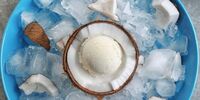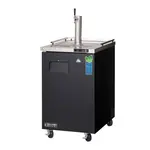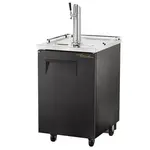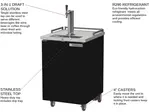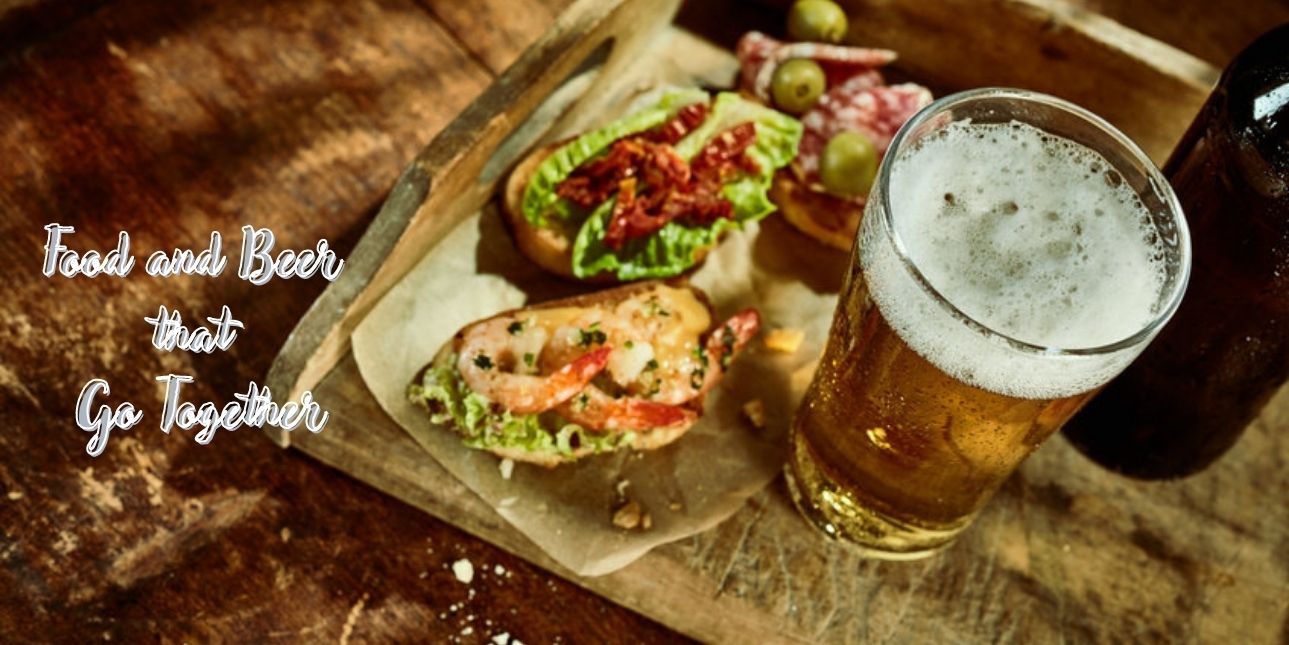
It's critical to construct a beer and food pairing menu that brings out the best in both the beer and the cuisine you're eating with it. Beer pairs nicely with a wide range of foods because it is created with a variety of ingredients such as barley, hops, yeast, and spices.
The Beer Flavor
The flavor or taste of beer is often characterized in a variety of ways. Understanding the flavor allows you to develop a beer pairing chart that will appeal to a wide range of palates. The flavor profile of a beer is determined by the combination of carbonation, hops, malt, water, and yeast in the beer.
A beer’s flavor is often described as:
- Hops
Although the term "hoppiness" is frequently used to describe how bitter a beer is, not all hoppy beers are bitter. The bitterness of the beer increases the earlier the hops are added in the brewing process.
- Bitter
The degree of bitterness in different beer varieties varies. Many breweries use an International Bitterness Units (IBU) scale to determine how bitter a beer is. The stronger the bitterness, the higher the IBU.
- Malt
Before being added to the brew, malt from barley grain is frequently roasted, giving the beer its distinct nutty flavor and toasty aroma. The caramelized sugars in the barley give the drink a slightly sweet, caramel flavor.
- Dark
Dark beers are usually prepared with malt grain that has been roasted to a dark color. With further roast time, the malt's nutty, caramel flavor transforms into darker undertones of chocolate and coffee.
- Light
Light beers are noted for having a refreshing and clean flavor. It's not bitter or hops, and the flavors aren't overpowering.
There are few flavors that don't go well with beer. However, when it comes to beer pairing, here are some easy principles to follow to enhance the flavor of your bar's food:
- Flavors that clash
If the dish has strong or rich ingredients, darker beers with a full-bodied flavor should be paired with it. Oysters and stout are a classic illustration of this.
- Consider flavors that go well together
Light meal pairings with light beers and rich food pairings with deeply flavorful beers are two ways to expand your palate. Pairing an American wheat beer with fresh summer salads or light lagers with fish, like poached sole, is a fantastic example of delicious beer and food pairings.
- Contrasting flavors
If the dish has strong or rich ingredients, darker beers with a full-bodied flavor should be paired with it. Oysters and stout are a classic illustration of this.
- Consider complementary flavors
Light meal pairings with light beers and rich food pairings with deeply flavorful beers are two ways to expand your palate. Pair an American wheat beer with fresh summer salads or light lagers with fish, like poached sole or halibut filet, for a delightful beer and food match.
- Use beer as a palate cleanser
Craft beer goes well with spicy cuisine or food with a strong, overpowering flavor, much like light beer goes well with dakgangjeong or Korean fried chicken. Bitter beers' flavor strength can also be reduced by eating rich, greasy meals like almonds or potato wedges.
- Avoid pairing mild with intense or strong flavors
Avoid combining light dishes like salmon or salad with full-flavored medium and dark craft beers for the finest food and beer pairing experience.
Pairing beer based on its style
- India Pale Ales (IPA) have a pronounced hop bitterness to them from start to finish.
They are best paired with:
- Tacos
- Burritos
- Fajitas
- BBQ Burger
- Steak
- BBQ Ribs
- Amber Ales have a malty taste with balanced hop bitterness and a hint of caramel.
They are best paired with:
- BBQ Pulled Pork
- Jerk Chicken
- Burgers
- Pizza
- Brisket
- Brown Ales are a dark malt with flavors of caramel and toffee.
They are best paired with:
- Sausages
- Roast Pork
- BBQs
- Grilled Fish
- Sushi
- Porters have hints of chocolate in them.
They are best paired with:
- Salmon
- Lobster
- Crab
- Bacon
- Sausages
- Rabbit, Venison, and game meats
- Stouts have a heavily roasted flavor with hints of coffee.
They are best paired with:
- Chocolate Truffles
- Chocolate Mousse
- Baked Mac & Cheese
- Lobster
- BBQ Food
- Shellfish
- Light Lagers are pale and do not have a strong taste.
They are best paired with:
- Buffalo Wings
- French Fries
- Hot Dogs
- Fried Fish
- Wheat Beers are brewed from a mixture of wheat and barley grains, giving them a smooth texture and light carbonation.
They are best paired with:
- Buffalo Wings
- Salads
- Fruit tarts
- Pastries
- Dark Lagers are nutty in taste with slight hints of caramel due to roasted malts.
They are best paired with:
- Goulash
- Sausages
- Burgers
- Pizza
- Bangers and Mash
- Fruit Beers are typically made from malt which has fruit juice/pulp added for the flavoring.
They are best paired with:
- Mascarpone cheese
- Duck and pork dishes with sweet components
- Pickled dishes
- Salads with fruity dressings
Including beer and food pairings on your bar menu can assist in improving the flavor of your dish while also bringing in more guests and revenue. It's important to know which flavors go well together to develop the finest beer pairings.
By serving chilled beer, you can bring out its nuances. The beer's taste and scent vary as it cools, affecting the beer and meal match. The use of the proper kitchen equipment can result in a perfectly cooled beer. Commercial refrigeration equipment and beer dispensers of high quality assist you in maintaining the ideal temperature for serving beer to your clients. The combination of a chilled beer and a well-matched food heightens your sense of taste, impacting your mood.
Beer mugs and glasses can also improve the drinking experience while enhancing the flavor of the ale. When the beer bubbles at the top burst, they release small drops that find their way to your nose and entice you. The aroma is preserved by a tapering head, and the design forces the drinker to put her nose closer to the beer. The pale ale glass, for example, has a wave-like wide stem that helps to balance flavors. In contrast, the wheat beer glass has a base that pushes aromatic foam up into the main bowl after each drink.
Glasses designed specifically for beer drinkers are a bit of a rarity. Wine connoisseurs will tell you how much of a difference glass can make. Red wine, for example, should be served in a red wine glass that is broad enough to allow the wine's strong flavor to be softened by the air.
The food, environment, glass, and kitchen equipment are some of the factors that impact the taste and quality of the beer. Beer and food pairings are something that can be achieved through trial and error.
When creating a menu that goes well with your beer, remember that the most important component is enjoyment and customer satisfaction.

